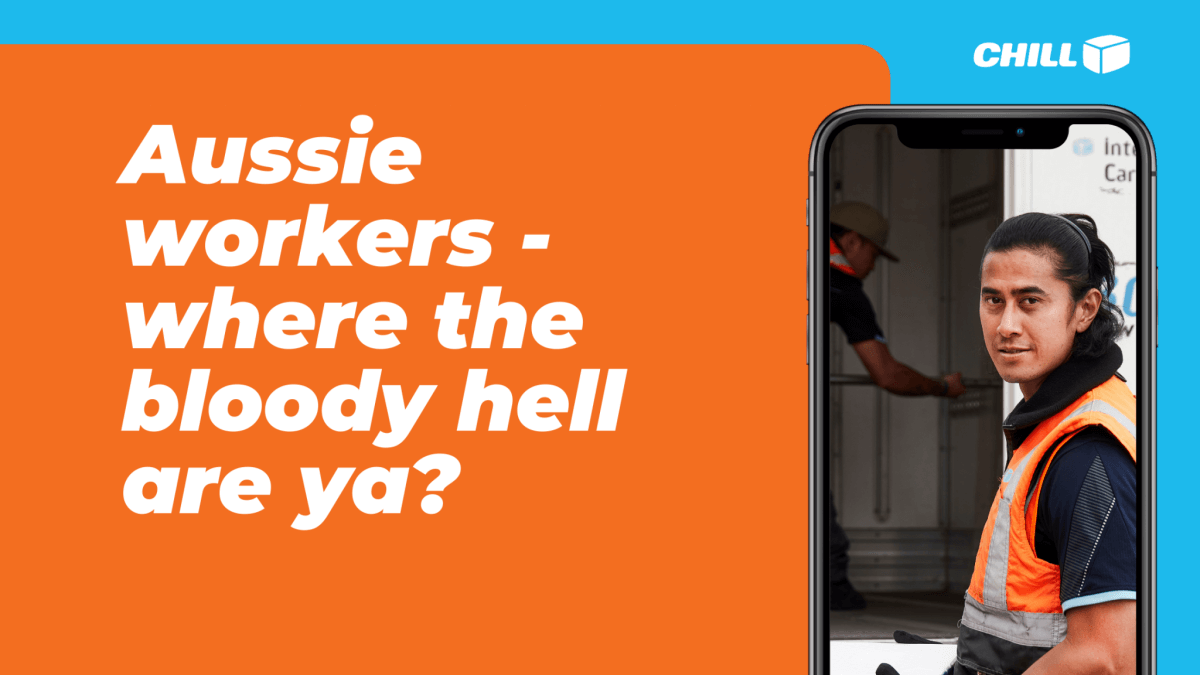Don't see the service you're looking for?

A simple scan of supermarket shelves nationwide tells us we’ve got some serious supply chain issues.
The lack of fresh fruit and vegetables, meat and bread in our grocery stores is symptomatic of the labour shortage facing the nation, as COVID-19 cases surge across Australia.
Everyone is feeling the pinch – from major suppliers like Woolworths and Coles, to small businesses serving up coffee and clothing, employers are struggling to keep the doors open amid a severe worker shortfall.
And with thousands of new COVID-19 cases being recorded across the nation daily (a record 38,625 in NSW alone on January 7), Australia’s workforce woes aren’t about to improve any time soon.
Employers will need to continue to juggle staff with positive test results, those isolating due to potential exposure and those caring for sick family members suffering from the virus.
With the sheer number of people bunkering at home due to COVID-19, it’s created a large gap in the workforce, opening up temporary jobs for thousands of people looking for shifts in everything from retail to manufacturing and logistics companies like ours.
The problem?
There’s no one to fill the roles. It’s tumbleweeds in the employment line.
And it’s not a new phenomenon – the labour shortage conundrum far precedes this latest wave of COVID-19, with many major industries Australia-wide struggling to fill vacancies.
The logistics and transport sector is nearing a crisis, with a backlog of unfilled roles pushing the industry to breaking point, making it almost impossible to meet the demand for essential goods across the country.
Similarly, the hospitality, education and medical sectors have been hit hard, with many NSW daycares forced to close due to a lack of educators and nurses reporting a health system physically ill-equipped to deal with COVID-19 2.0.
It begs the question – where the bloody hell are the people?
The challenge of attracting qualified, experienced talent seems to be more complicated than ever.
Job ads previously attracting hundreds of applicants are now lucky to receive a handful, leaving vacancies open for months, as businesses desperately try to find suitable workers in full-time, part-time and even casual capacities.
A stop on skilled migration as a result of the pandemic, coupled with government bail-outs for workers and a worldwide push for people to work from home, has created a massive gap in the frontline Australian workforce, which has become more acute as COVID-19 cases multiply.
Unfortunately, there’s no simple answer to the problem.
While some companies are looking to automated systems, AI and even robots in warehouses for help, for hundreds of family-run, small businesses across the nation, that level of new tech investment is simply not an option.
Nor is out-witting the virus – as we’ve seen with the Omicron variant, it spreads fast, taking out entire workforces in its wake.
The solution may lie in thinking outside the box when it comes to recruitment.
We’ve long prided ourselves on doing cool things better and we’re now applying the same ethos to how we source talent. We’re deepening our searches, testing out advertisements in new markets and reaching out to new audiences who may never have explored a career in the logistics field.
Incentives for workers are key – and it’s not just about remuneration. The employee of 2022 wants flexibility, support and training, and a socially conscious workplace – and given the labour crisis, they’re in a strong position to bargain for perks. Employers need to be open to negotiation in their recruitment process and unafraid to flex for the right people.
Ultimately, we’re all in the same people-shortage boat – moving forward, it’s how we bail out the water that matters.









